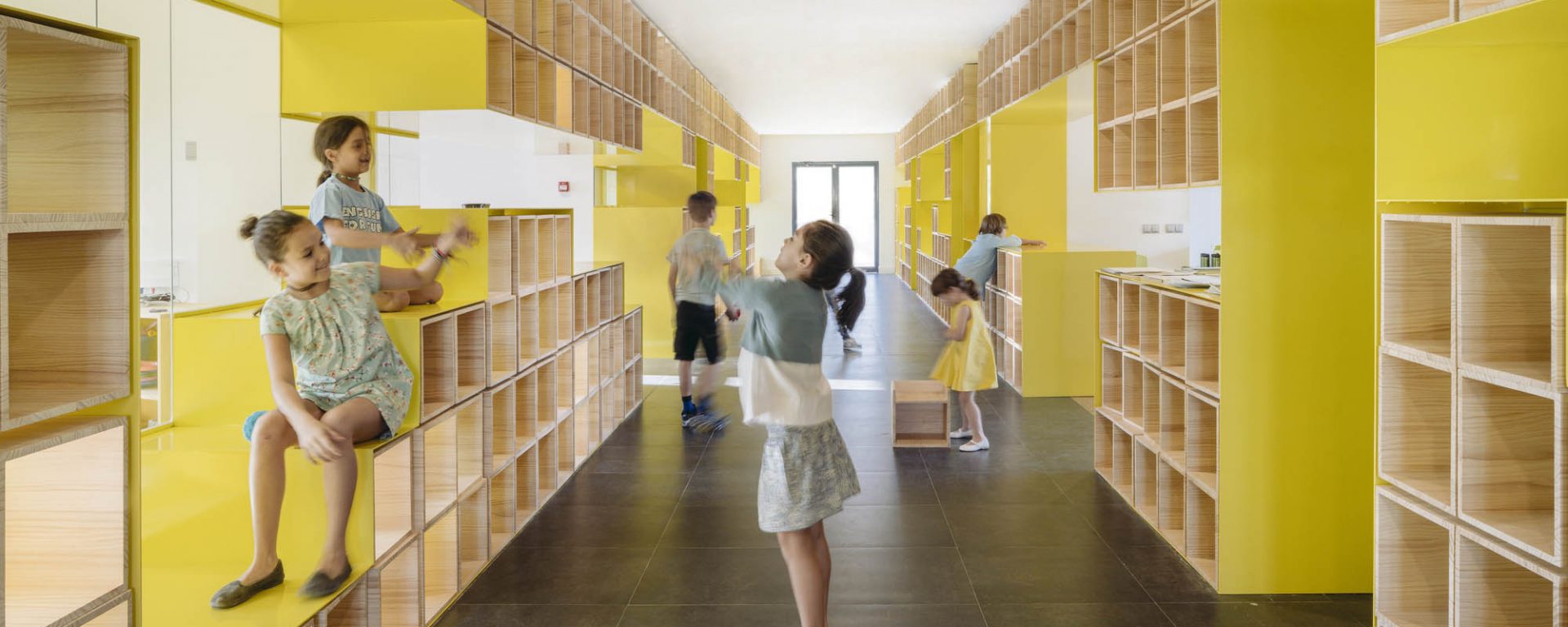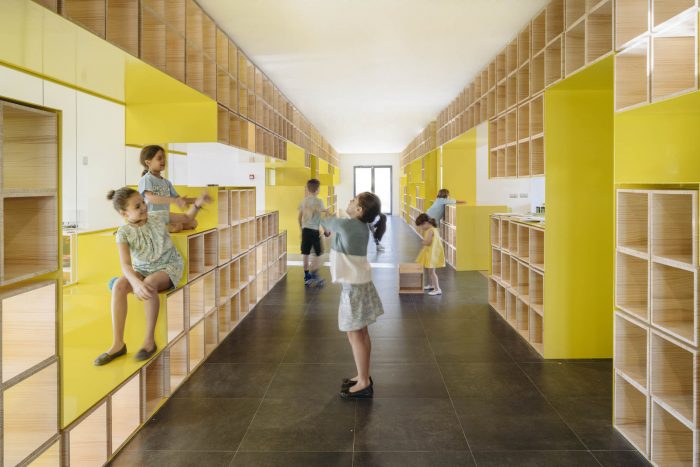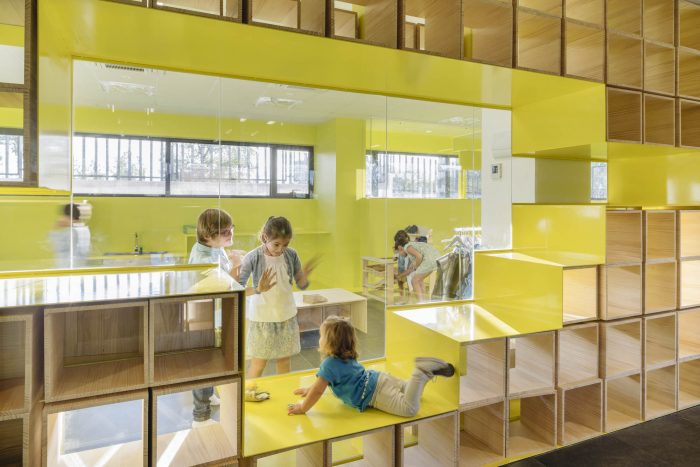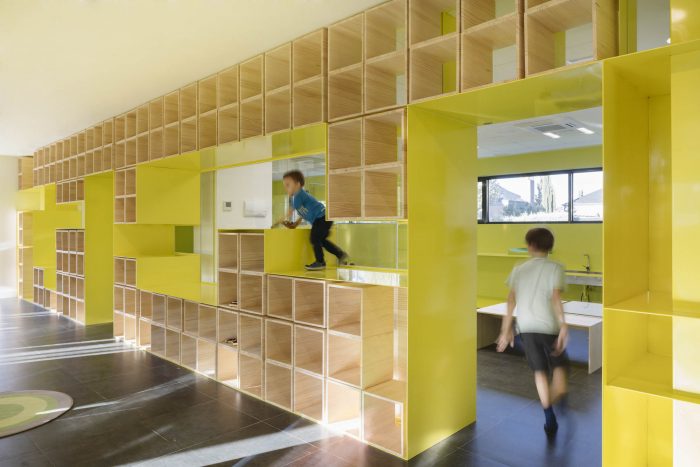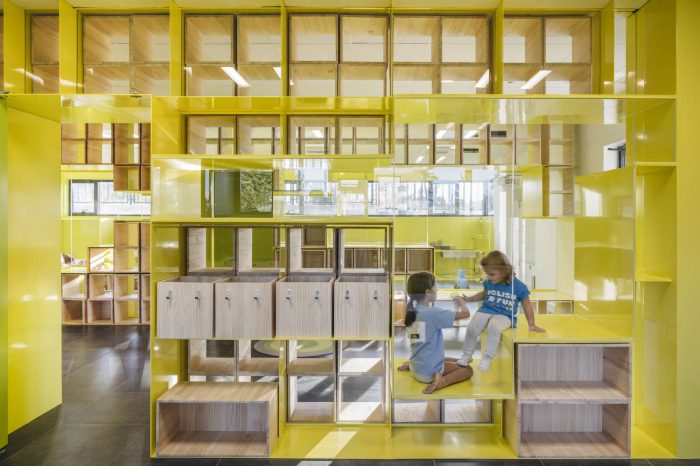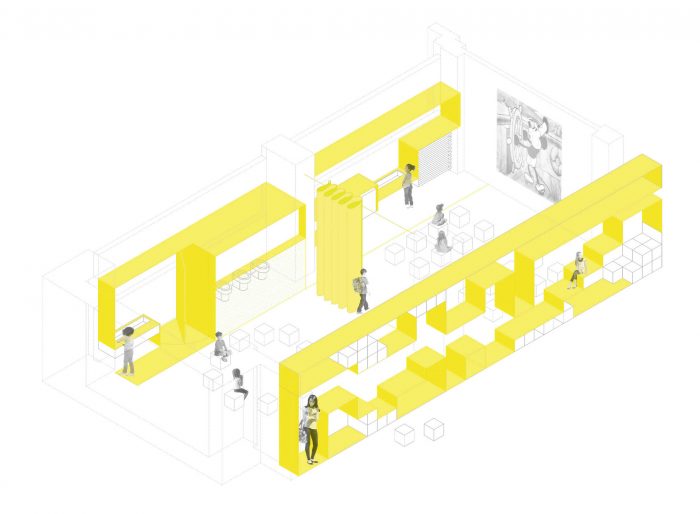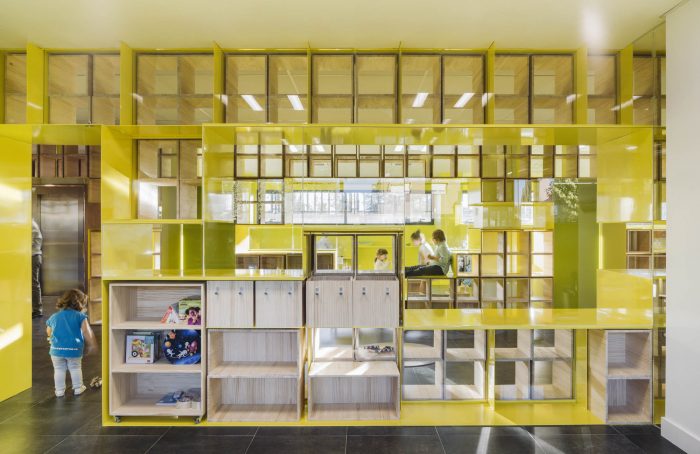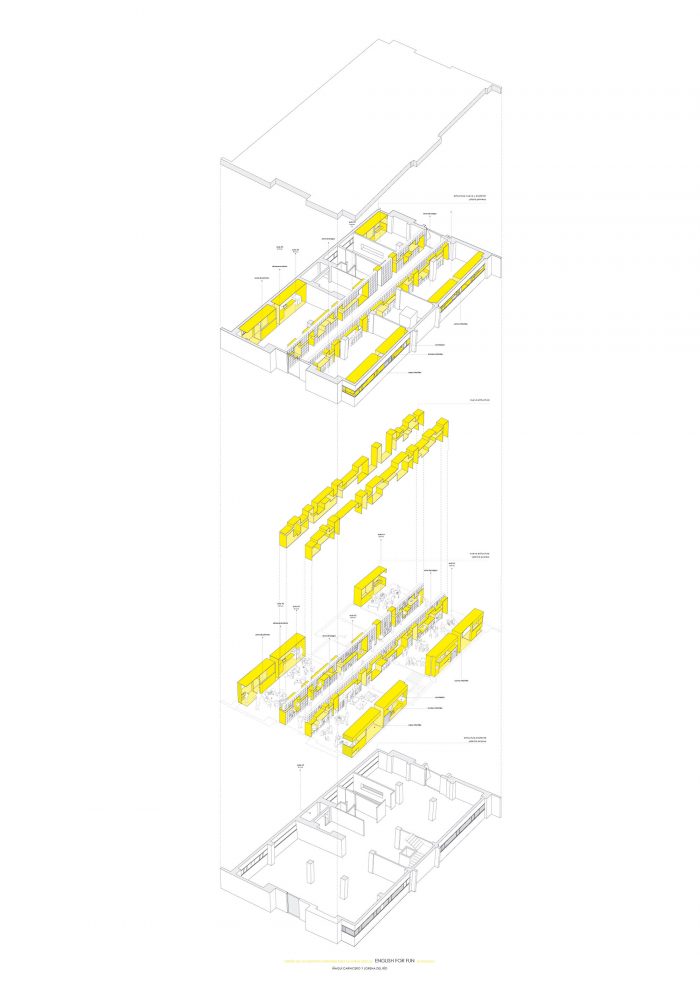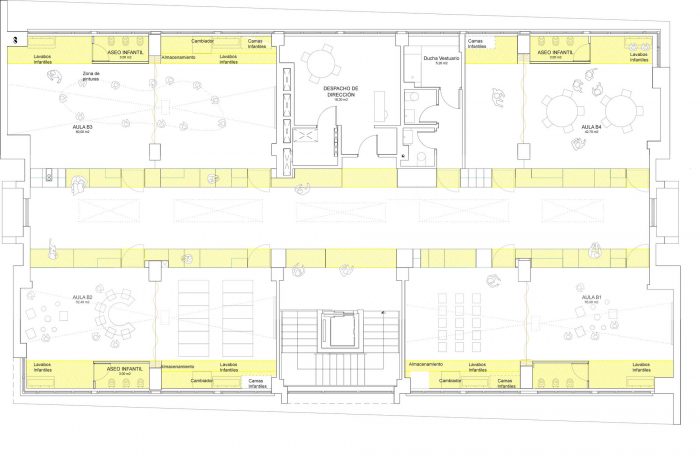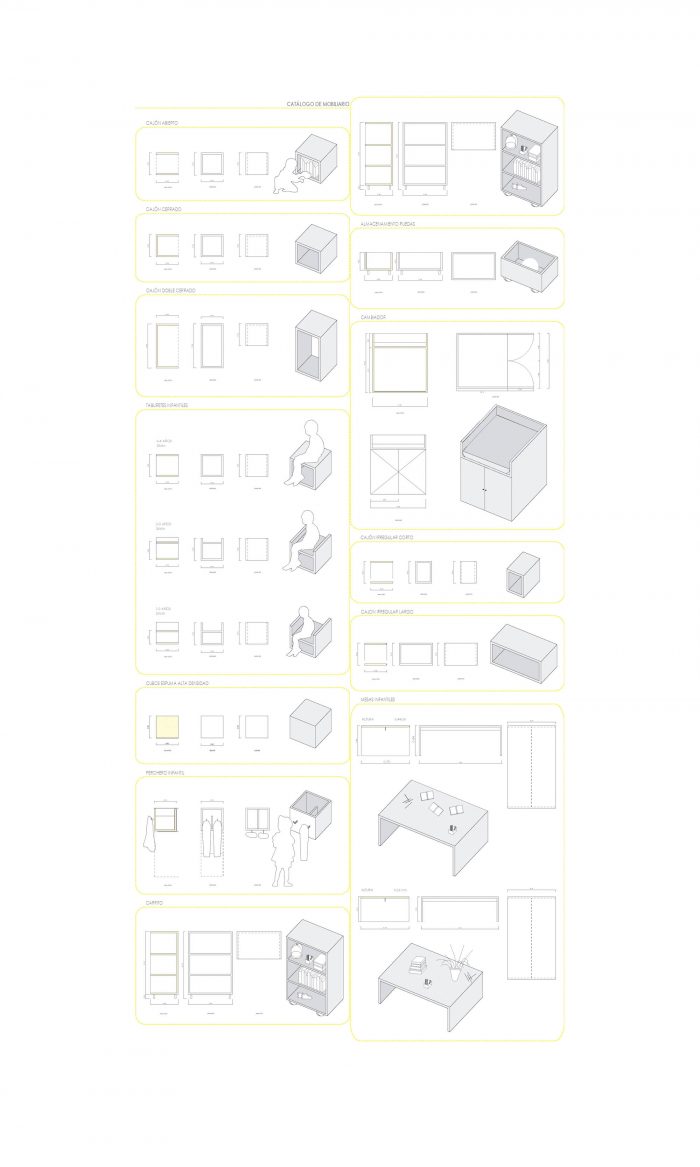English for Fun于2011年在西班牙成立,采用一种革命性的方法,让任何年龄或身体状况的儿童利用他们的五感来学习英语。趣味英语是所有儿童的学习场所。这种教学方法的基础是,每个孩子都是特别的、独一无二的。
English for Fun, founded in Spain in 2011, uses a revolutionary method for children of any age or physical condition to learn English using their five senses. English for Fun is a place for all children to learn. This pedagogical approach is based in the idea that every child is special and unique.
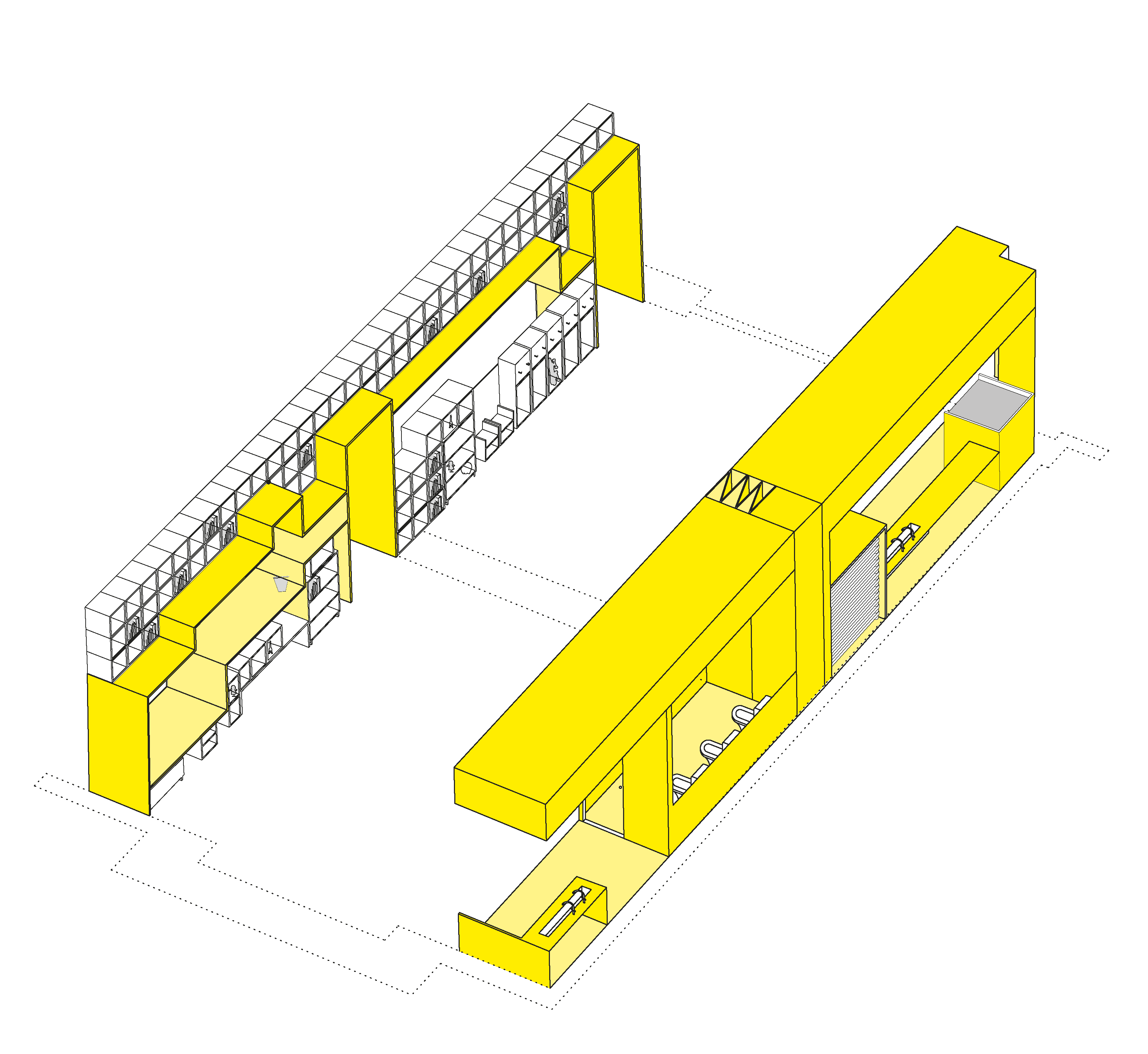
趣味英语的新中心希望成为这种创新教学方法的代表,一个促进创造力、想象力和刺激所有五种感官的地方。
The new center for English for Fun wanted to be a representation of this innovative teaching method, a place to booster creativity, imagination, and to stimulate all five senses.
这项委托代表了一个机会,研究设计如何在游戏和学习的过程中塑造经验和影响主体。
This commission represented an opportunity to investigate how design can shape experience and affect the subject in processes of playing and learning.
瑞吉欧-艾米利亚方法是一种基于自我指导和非常开放的学习解释的教育哲学。 它以三个核心原则为基础。
孩子是学习过程中的一个积极部分。它基于一种非指导性的游戏方式,孩子们对自然和人工游戏对象有自己的解释。
The Reggio Emilia approach is an educational philosophy based in a self guided and very open interpretation of learning. It is based in three core principals:
the child as an active part of the learning process. it is based in a non-guided way of playing where the kids have their own interpretation of natural and artificial play-objects.
学校的建筑环境被认为是第三位教师,仅次于教师和家长。
the built environment of the school is considered the third teacher, only after teachers and parents.
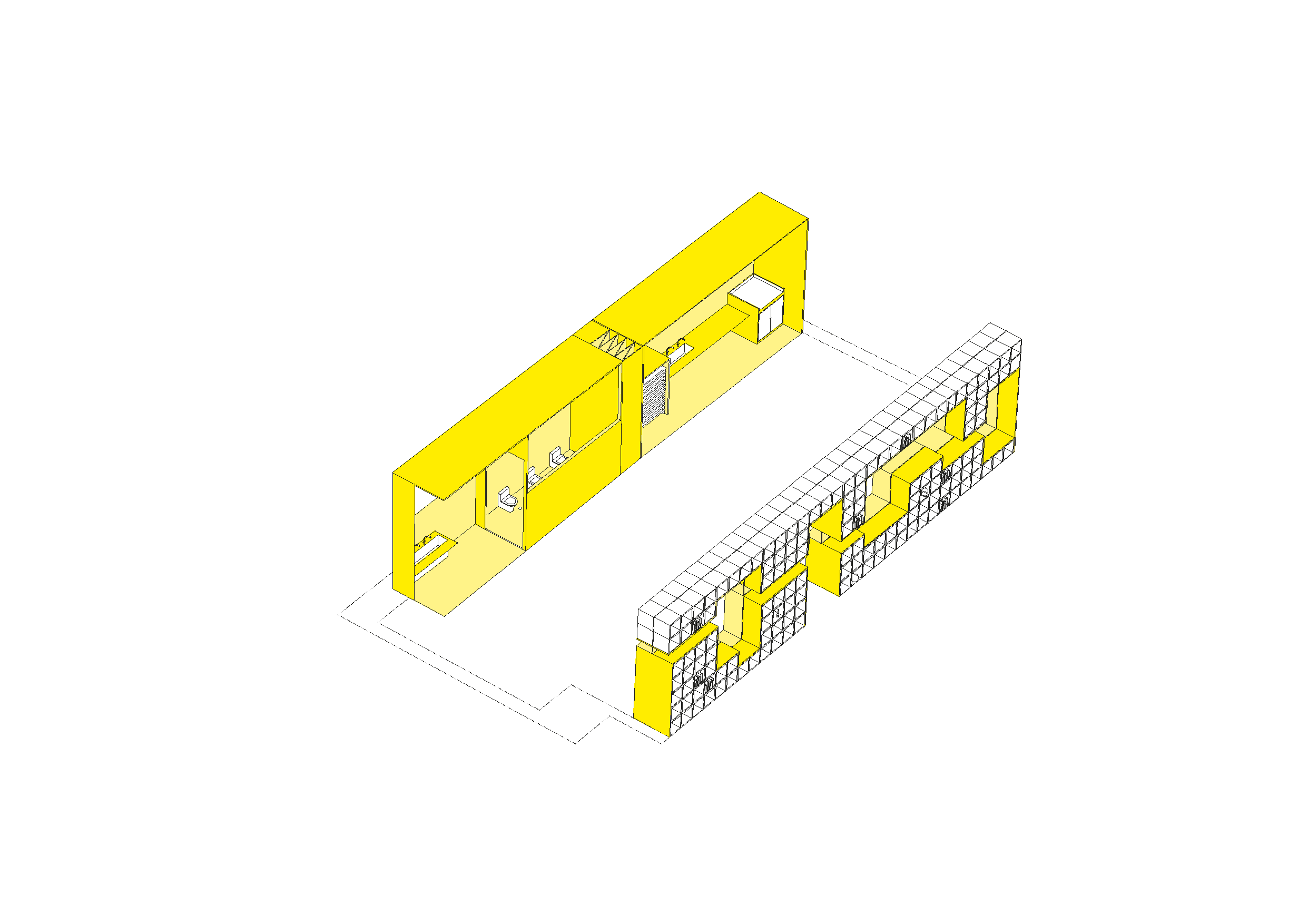
学习的过程必须是可见的
the process of learning has to be made visible
该提案应克服为孩子们设计的空间的陈规陋习,不具象化,对多种解释开放。 我们的目标是创造一个具有冒险游乐场精神的空间,在那里,游戏对象,而不是玩具,只有在与孩子们的互动中才能充分发展其潜力。 设计应该在成人规模和儿童规模上运作,所以创造只有儿童可以居住和拥有的空间很重要。答案是提出一个修补盘,所有参与游戏和学习过程的物品都可以储存在那里,制作的作品可以展出,孩子们也可以觉得他们是其中的一部分。 我们的策略是提出一个厚实的结构,而不是薄薄的隔板来配置教室空间,一个可居住的墙,在不使用时可以储存所有的家具和物品,使教室的重新配置非常容易。破碎的几何结构创造了一系列的角落,这些角落将被孩子们居住。不同类型的物体被减少到最低限度,建立一个通用模块,可以以多种方式使用。它不是椅子、桌子、塔、游戏厨房、汽车、石头箱或头盔,而是以上所有的东西。
The proposal should overcome the cliches of spaces designed for kids, being non figurative and open to multiple interpretations. The goal was to create a space in the spirit of the adventure playgrounds where the play-objects, not toys, only develop their full potential in the interaction with the kids. The design should operate at the adult scale as much as the kids’ scale, so it was important to create spaces that only children could inhabit and own. The answer was to propose a tinker tray, where all the objects involved in the play and learning process could be storage, the work produced exhibit and where the kids could also feel that they are part of it. The strategy was proposing a thick structure instead of thin partitions to configure the class room space, an inhabitable wall that will storage all furniture and objects when not in use, making the reconfiguration of the class very easy. The broken geometry of the structure creates a series of nooks, that will be inhabited by the kids. The different typologies of objects were reduced to the minimum, establishing a generic module that can be used in multiple ways. It is not a chair, or table, or tower, or play kitchen, or car, or box for stones, or helmet, but all the above.
这面厚厚的可居住的墙的功能是双重的,首先是创造孩子们自己的小空间,其次是提供面向教室和走廊的存储空间,所以通常只作为循环的空间现在被激活,可以作为孩子、老师和家长的共同场所。它还将走廊转变为学习过程的展示区,模糊了教室之间的界限,扩大了空间的感知,避免了教室的传统分隔。
The function of this thick inhabitable wall was twofold, first creating little spaces to be own by the kids, and second to provide storage space facing both, the classroom and the corridor, so the space that usually only serves as circulations is now activated and can be used as common ground for kids, teacher and parents. It also transforms the corridor into a showcase of the learning process, blurring the limits between the classrooms, and expanding the perception of the space, avoiding the conventional compartmentalisation of the classrooms.
Architects: Iñaqui Carnicero, Lorena del Río
Area: 1050 m²
Year: 2016
Photographs: Imagen Subliminal
Manufacturers: HERMEX, Navas 3000
City: Madrid
Country:Spain

